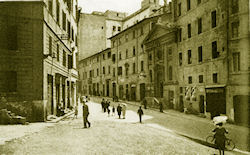
Figure 35: Via della Consolazione with the church of S. Omobono (from Capitolium, IX, 1933, 354)
The systematic demolition of the buildings on Via della Consolazione on the side of S. Omobono (Figure 35) began in August 1936. The church owes its survival, literally 'salva dal piccone demolitore' (saved from the demolishing pickaxe), as an inscription within it commemorates, to the opposition of 'Ceccarius' (Giuseppe Ceccarelli), who served as Consultore del Governorato and whose devotion to the memories of the city was renowned. The initial project called for the church to be included within the façade of the building planned for the Uffici Tecnici of the Comune di Roma, facing Via della Consolazione (now the Vico Iugario); this building, together with that of the Anagrafe and Tributi, was intended to flank imposingly the Via del Mare (modern Via L. Petroselli; Ramieri 2005a, 4).
After the first accidental discoveries during work on the foundations of the new building, however, the Governatore 'commissioned' a campaign of archaeological investigations under the direction of Colini (then the Ispettore Capo of the Servizi Archeologici of the X Ripartizione [chief inspector of the archaeological service of the X division]), which brought to light a vast structural complex, dubbed 'area sacra' (sacred area) because of the presence of two temples later identified as those of Fortuna and Mater Matuta (Colini 1938b, 279-81). Under pressure from the city's media it was decided to interrupt the construction work in order to explore the area, while the building project was necessarily scaled back (Ramieri 2005a, 6).
The large-scale, unsystematic excavation that followed revealed a large temple complex and several surrounding insulae. With regard to the former, which was fortunately preserved from the ongoing construction work, the desultory published notes on the 1937-1938 fieldwork document a large platform (approximately 47m each side) containing a substantial levelling dump and supporting the cellae of two twin temples orientated approximately on a N-S axis (temple A, on the western half of the platform, and temple B, on the eastern half, with matching altars in the southern portion of the platform). Additionally, deep soundings conducted in the area of the apse of the church of S. Omobono (corresponding to temple B) uncovered tantalising evidence for an Archaic temple building, possibly comprising two phases, which was partially overlain by the later temple platform. Portions of the large ceramic assemblage from the 1937-1938 fieldwork were published after the resumption of work in the area in the post-war period (primarily Colonna 1962 and 1966; Paribeni 1962; Peroni 1962), while the architectural terracottas from the Archaic temple were examined and partially published in the course of a protracted debate on the chronology of this early structure (e.g. Mura Sommella 1977a; Arata 1990).
By 1937, meanwhile, after the bell gable on the right side of the façade of S. Omobono and the medieval bell tower on the eastern side of the apse (the latter having been reused as a house) were demolished, the church appeared isolated (Figure 36). Colini and Krautheimer thus had the opportunity to examine the masonry of the sides of the church, but were unable to attribute the few, 9th-century structural remains to the structure with certainty (Ramieri 2005a, 6; Colini 2000, 114). Perhaps useful information to that end could have been derived from the 'zona delle fondazioni medievali' (area of the medieval foundations) uncovered between S. Omobono and Piazza della Consolazione; however, this was not studied (Colini 2000, 90).
The new Uffici del Governorato were inaugurated on October 28, 1938, as attested by the newspapers of the time and by a commemorative picture taken at the Palazzo dell'Anagrafe (reproduced in Insolera 2002, 121). As had already been decided during an inspection by Giglioli and Muñoz in 1937, the archaeological area of S. Omobono was preserved, with a very small area set aside for the Uffici Tecnici (Technical Service) of the Governorato, which were given a plan analogous to that of the Anagrafe on the opposite side of the Via del Mare (Colini 2000, 85). Muñoz, on the other hand, recalls that the decision to set back the building 'sull'angolo della via del Mare' (on the corner of the Via del Mare) seemed influenced by the need to maintain a clear view of the Capitoline for those approaching from the Aventine (Muñoz 1943, 20).
© Internet Archaeology/Author(s)
University of York legal statements | Terms and Conditions
| File last updated: Mon Mar 12 2012